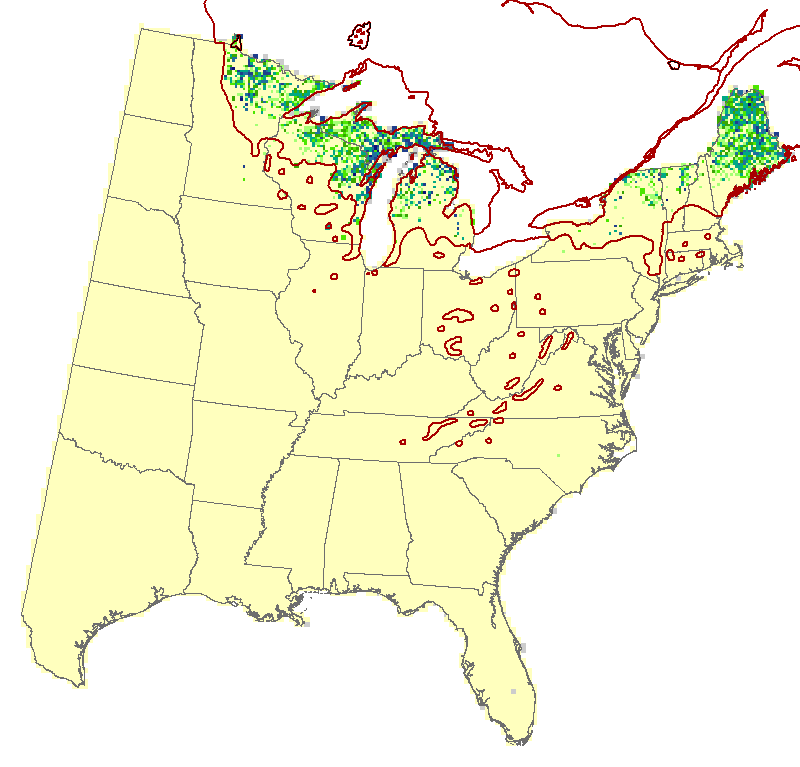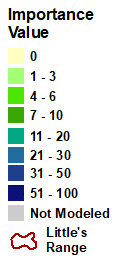northern white-cedar (Thuja occidentalis)
Model Reliability: High
| GCM SCENARIO | % Area Occ | Ave IV | Sum IV | Future/Current IV |
|---|---|---|---|---|
| Actual | 6.1 | 12.6 | 22691 | N/A |
| RFimp | 8.9 | 8 | 20861 | 0.92 |
| CCSM45 | 10.3 | 5.5 | 16644 | 0.8 |
| CCSM85 | 12.3 | 5.4 | 19395 | 0.93 |
| GFDL45 | 11.1 | 5 | 16203 | 0.78 |
| GFDL85 | 12.6 | 4.8 | 17762 | 0.85 |
| HAD45 | 12.1 | 4.9 | 17537 | 0.84 |
| HAD85 | 13.9 | 4.9 | 20058 | 0.96 |
| GCM45 | 12.5 | 4.6 | 16846 | 0.81 |
| GCM85 | 14.5 | 4.5 | 19100 | 0.92 |
Regional Summary Tree Tables
Summaries for tree species are available for a variety of geographies, in both PDF and Excel format. These summaries are based on Version 4 of the Climate Change Tree Atlas
Interpretation Guide
Northern white cedar is widely distributed (4.4% of area), sparse, but high IV conifer across the north and some isolated spots mostly in the Appalachians. The models class as 'No change' though they show some loss in habitat. Though our system gives an overall rating of fair for this species to cope, it has regeneration issues in parts of its range due to deer. SHIFT does suggest it appropriate for infill planting.
Family: Cupressaceae
Guild: persistent, slow-growing understory tolerant
Functional Lifeform: medium-size evergreen tree
| 4.2 | -0.70 |
| 0.49 |  |
MODFACs
What traits will impact northern white-cedar's ability to adapt to climate change, and in what way?:
Primary Positive Traits
Shade tolerance
Primary Negative Traits
Fire topkill



